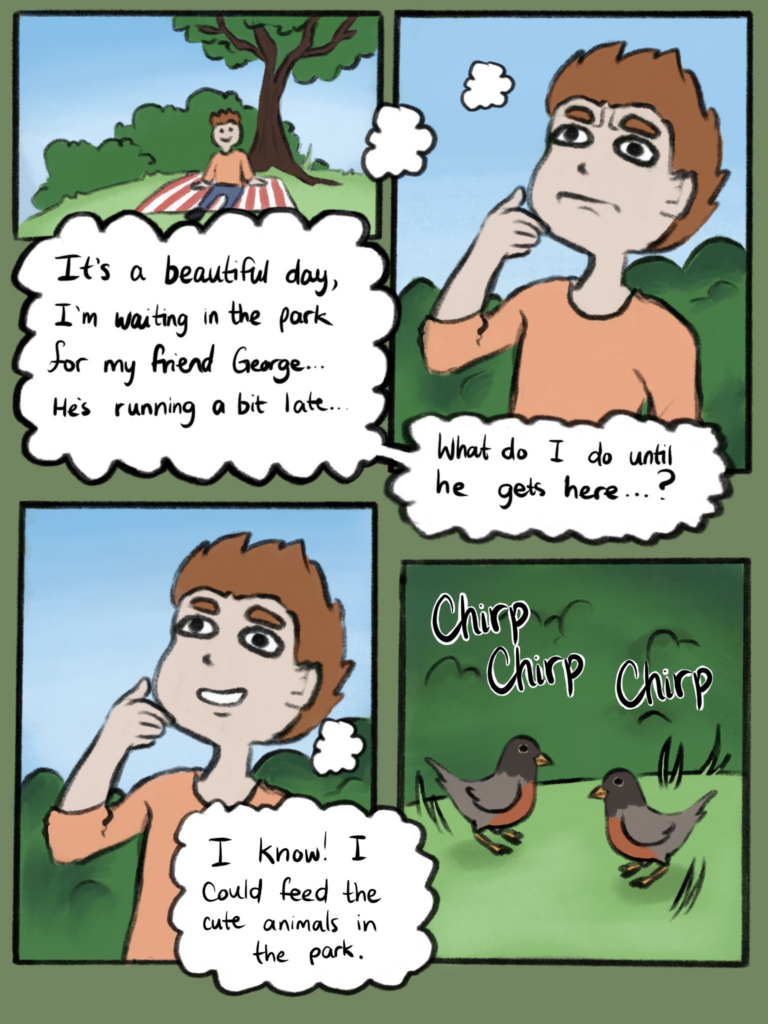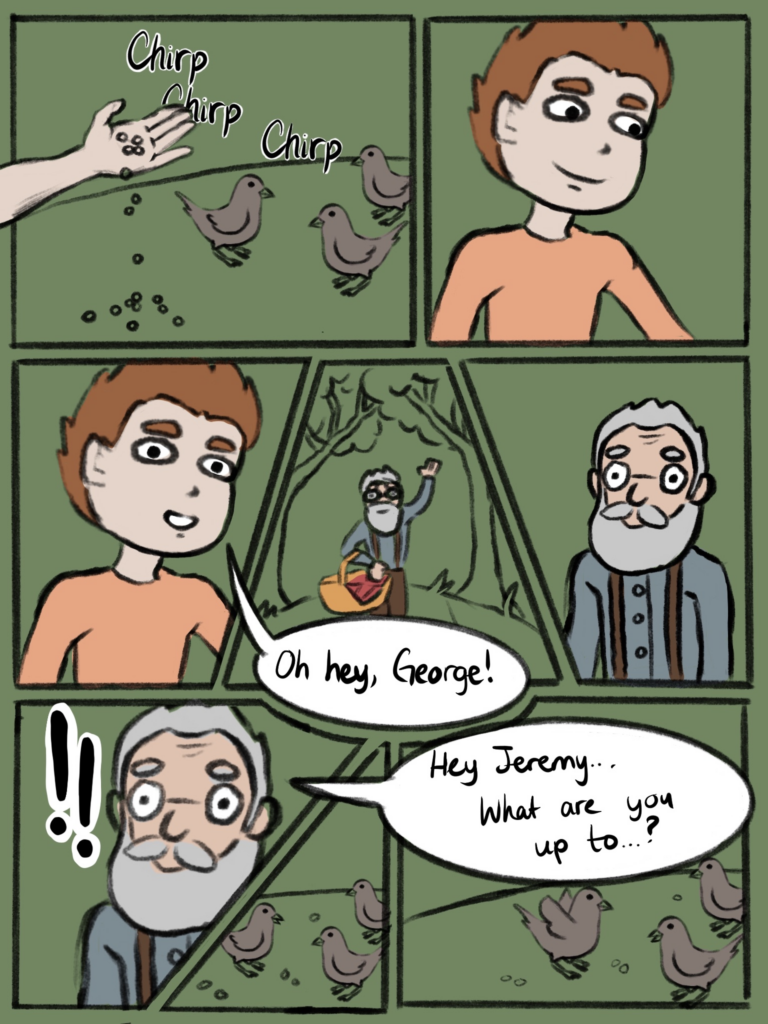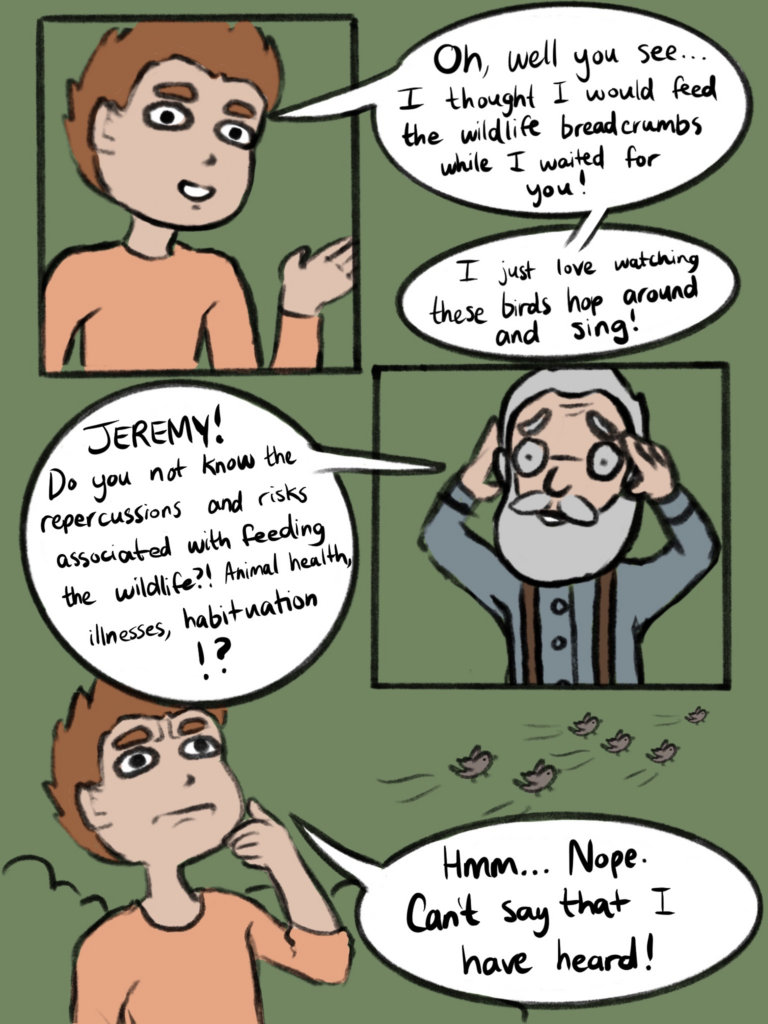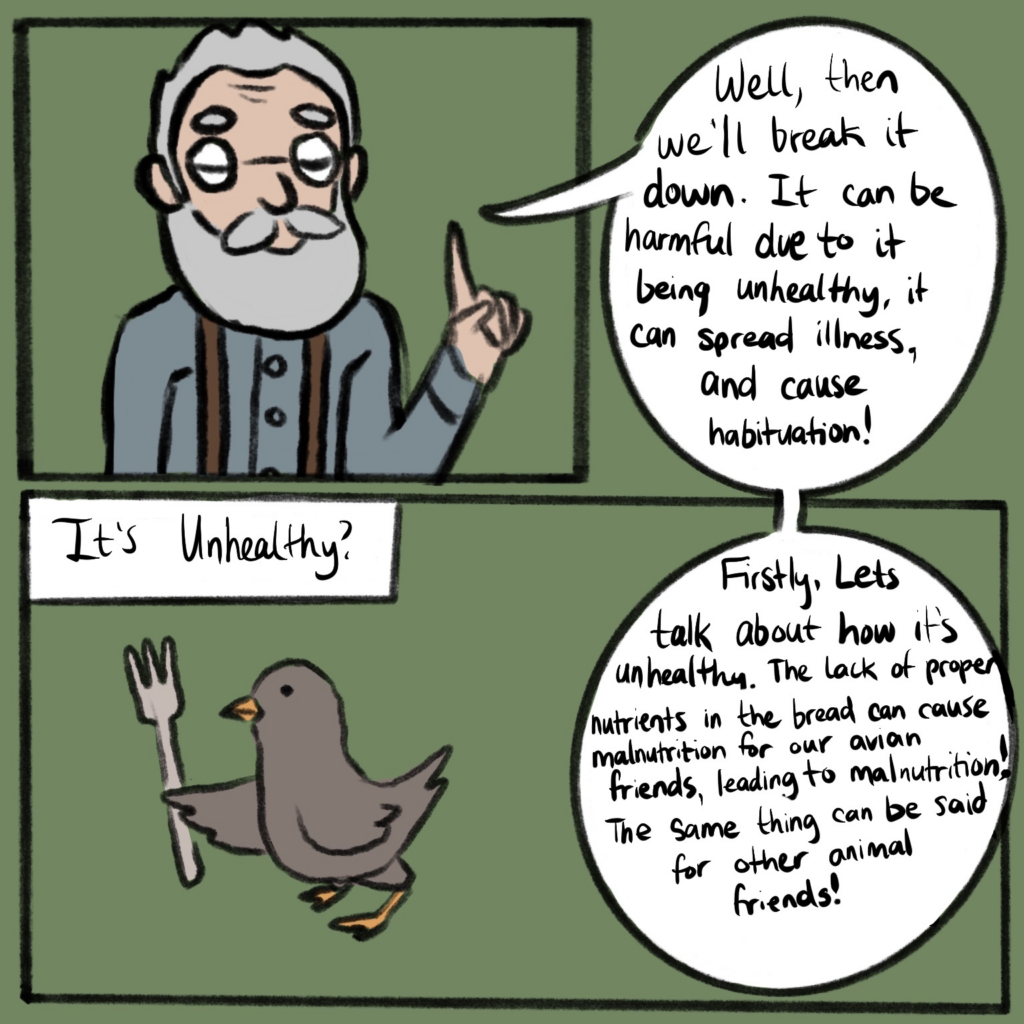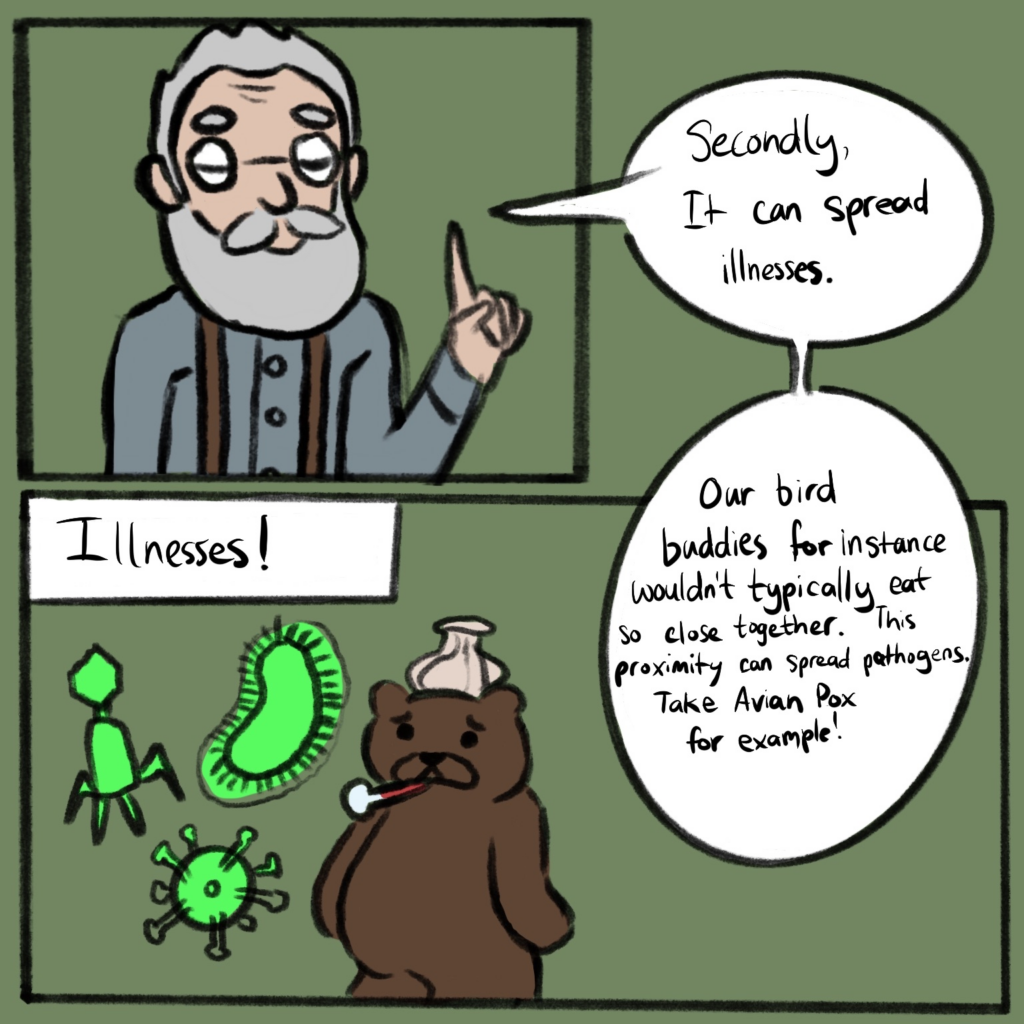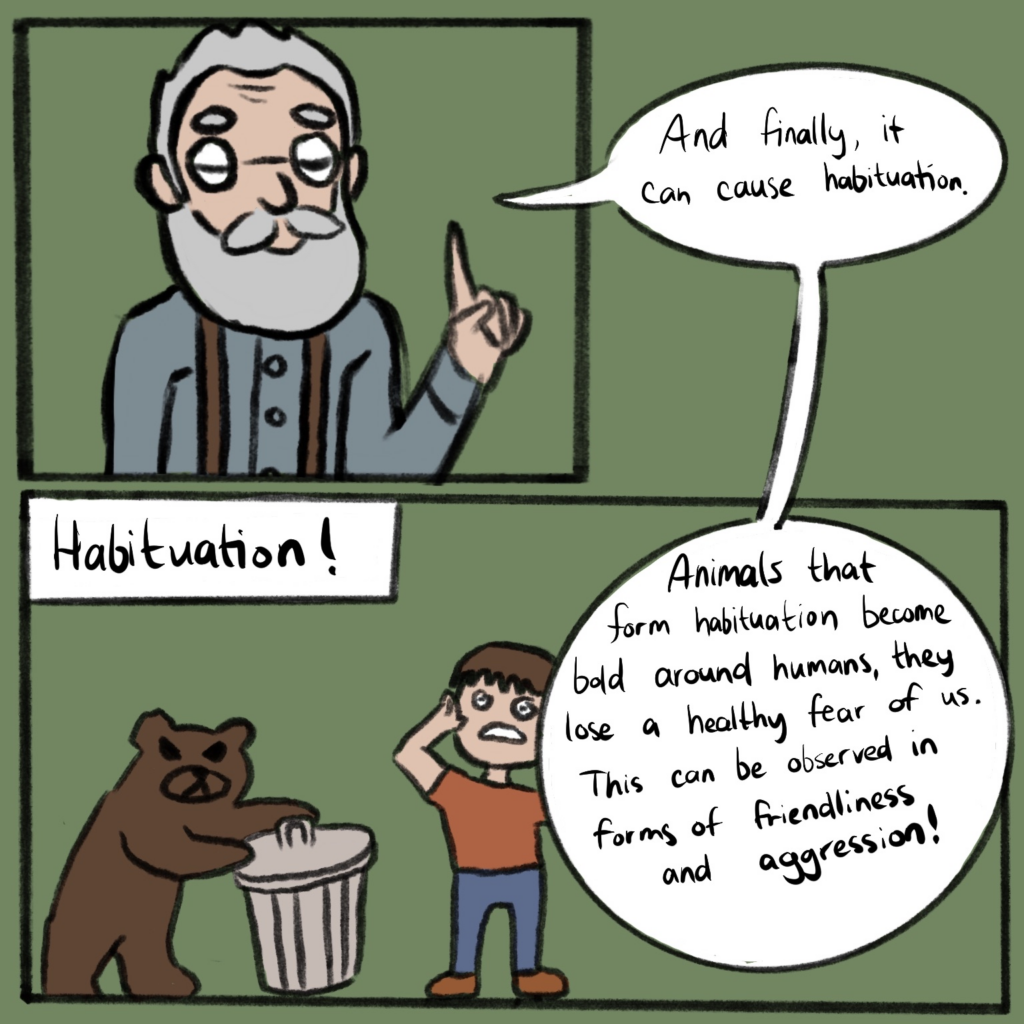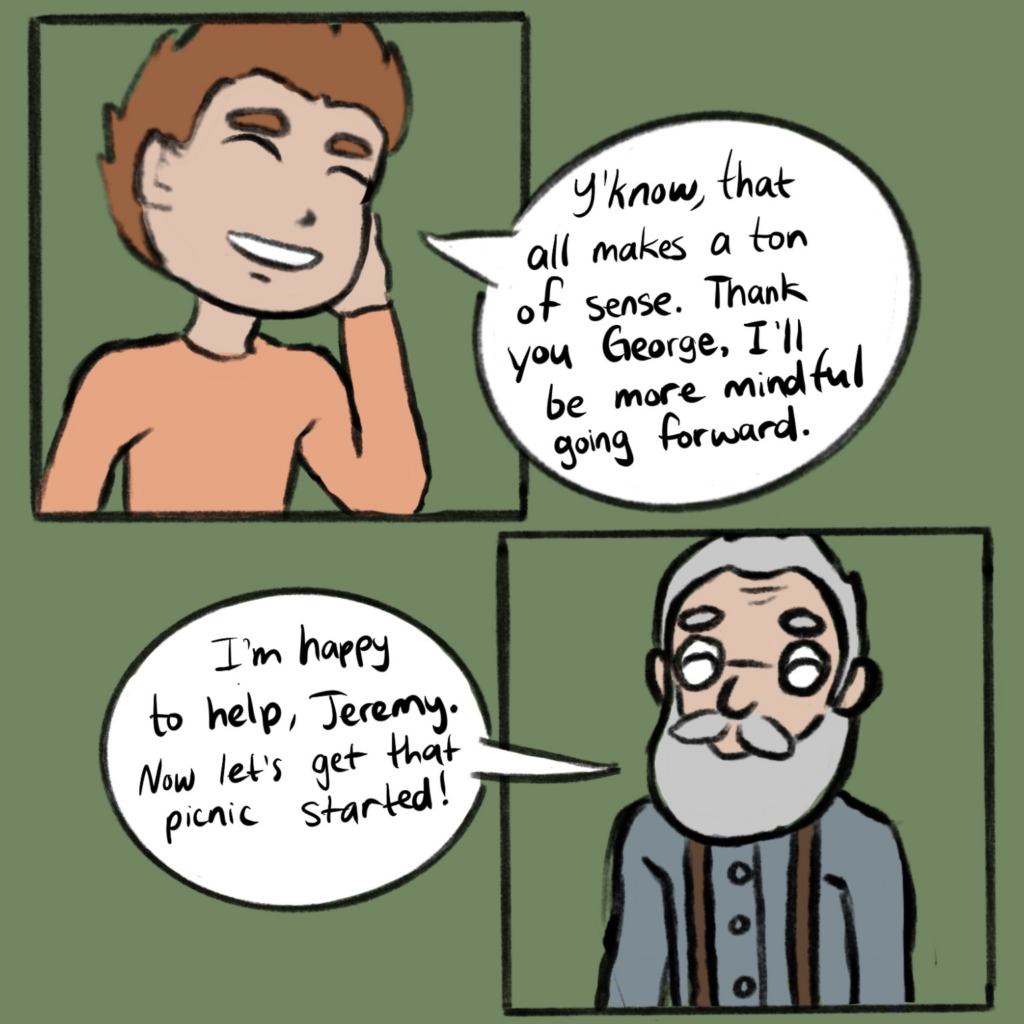Challenge A: Finalization and Comic
Peer Feedback:
After receiving feedback from my peers, it was mentioned that the topic that I had chosen was strong and visually effective. The topic of feeding the wildlife was seemingly relevant to UVic students on campus, as the grounds are surrounded by nature and parks. Additionally, the visual aspects of the prototype aid to draw the viewers eye in and keep a captive audience.
There were a few weak points noticed by both my peers that were prevalent in my prototype. When I received suggestions, it was evident that I needed to refine the general flow in my panels to more clearly communicate my topic. Due to my unrefined panels, my topic was a bit choppy and obscure to my peers. Another idea was to elaborate further on the theories and principles on multimedia learning in my planning process. It was also suggested to add a panel of Jeremy throwing feed to the birds in order to better convey the story.
Reflect and Refine:
After discussing with my peers and proofing my prototype, it was clear to me that I had a strong topic that was well supported by visually aesthetic images to pair with text. I think the audience intended is well reached with the prototype I provided. I think as Victoria is generally a naturally diverse community that has a lot of wildlife and parks, the comic is perceived in a way that I am happy with.
For revisions, I decided to add the additional panels as well as reformat them in my final comic. I added more panels at the beginning to set a better foundation for the story,this included creating the aforementioned panel of Jeremy feeding the birds. In addition to this, I tried to add a bit more text to better contextualize the story and subject. Finally, I added more visual detail to fortify my visual strengths in the prototype, and drew the characters using more time and detail.
If I were to change anything in the final comic, I would probably add more depth to the complications of feeding the wildlife that are listed within. One of the issues I would have liked to add would be the environmental impact that food litter can have in any natural space, such as bodies of water, parks and trails. I also would have liked to elaborate further on how feeding the wildlife can be done unintentionally through tourism, hobbyism and hiking.
There were a few issues that came up within my overall project, pertaining to the subject itself as well as the method in which I chose to create the comic. With the topic of feeding wildlife, there is some controversy when it comes to feeding birds specifically. Oftentimes people will argue about the ethicality of feeding birds, being split on whether it is good or bad. This raised some problems in my planning process, I wanted to generalize the topic to just broadly address animals than just birds. In terms of the creation, I decided to fully hand draw and colour my comic panels which I think set me back a bit for time, as well as did not reach the expectations I had for myself.
Overall, I think creating a comic was an alright tool for education. I was clearly able to see how avoiding an extraneous cognitive load helps convey a subject. The creator is able to avoid redundancy in words, and conveying them with imagery and short text helps lighten the weight on the reader. The use of signalling helps convey important information, easily narrowing it down for the viewer. The use of images and text close together help the subject flow and add depth without the addition of unnecessary descriptions. However, when converting my subject into the form of a comic, I found it difficult to convey all the information I wanted to include in such limited space and words. Despite my gripe with the limitation of information, I did find the process to be fun and overall more relatable than say an academic paper.
The Comic:
